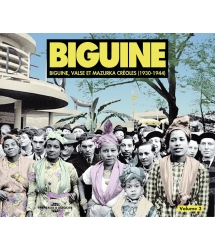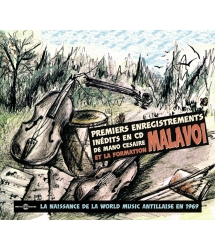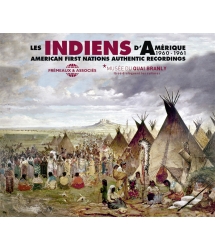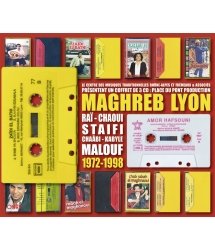- Our Catalog
- Philosophy
- Philosophers of the 20th century and today
- History of Philosophy (PUF)
- Counter-History and Brief Encyclopedia by Michel Onfray
- The philosophical work explained by Luc Ferry
- Ancient thought
- Thinkers of yesterday as seen by the philosophers of today
- Historical philosophical texts interpreted by great actors
- History
- Books (in French)
- Social science
- Historical words
- Audiobooks & Literature
- Our Catalog
- Jazz
- Blues
- Rock - Country - Cajun
- French song
- World music
- Africa
- France
- Québec / Canada
- Hawaï
- West Indies
- Caribbean
- Cuba & Afro-cubain
- Mexico
- South America
- Tango
- Brazil
- Tzigane / Gypsy
- Fado / Portugal
- Flamenco / Spain
- Yiddish / Israel
- China
- Tibet / Nepal
- Asia
- Indian Ocean / Madagascar
- Japan
- Indonesia
- Oceania
- India
- Bangladesh
- USSR / Communist songs
- World music / Miscellaneous
- Classical music
- Composers - Movie Soundtracks
- Sounds of nature
- Our Catalog
- Youth
- Philosophy
- News
- How to order ?
- Receive the catalog
- Manifesto
- Dictionnary











- Our Catalog
- Philosophy
- Philosophers of the 20th century and today
- History of Philosophy (PUF)
- Counter-History and Brief Encyclopedia by Michel Onfray
- The philosophical work explained by Luc Ferry
- Ancient thought
- Thinkers of yesterday as seen by the philosophers of today
- Historical philosophical texts interpreted by great actors
- History
- Books (in French)
- Social science
- Historical words
- Audiobooks & Literature
- Our Catalog
- Jazz
- Blues
- Rock - Country - Cajun
- French song
- World music
- Africa
- France
- Québec / Canada
- Hawaï
- West Indies
- Caribbean
- Cuba & Afro-cubain
- Mexico
- South America
- Tango
- Brazil
- Tzigane / Gypsy
- Fado / Portugal
- Flamenco / Spain
- Yiddish / Israel
- China
- Tibet / Nepal
- Asia
- Indian Ocean / Madagascar
- Japan
- Indonesia
- Oceania
- India
- Bangladesh
- USSR / Communist songs
- World music / Miscellaneous
- Classical music
- Composers - Movie Soundtracks
- Sounds of nature
- Our Catalog
- Youth
- Philosophy
- News
- How to order ?
- Receive the catalog
- Manifesto
- Dictionnary
36 MASTERPIECES OF LATIN AMERICA
Ref.: FA5176
EAN : 3561302517629
Artistic Direction : TECA CALAZANS
Label : Frémeaux & Associés
Total duration of the pack : 1 hours 48 minutes
Nbre. CD : 2
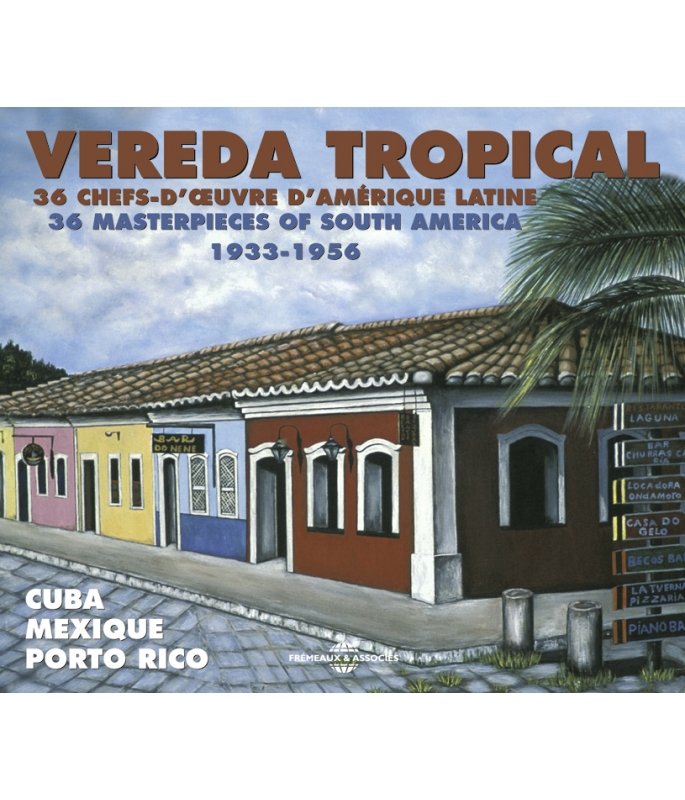
36 MASTERPIECES OF LATIN AMERICA
36 MASTERPIECES OF LATIN AMERICA
“This anthology covers various musical styles in Spanish mainly from the triangle formed by Cuba, Mexico and Pueto Rico with deliberate emphasis on the bolero. Why ? Because it is impossible to remain unmoved by the charm of the bolero that has left an indelible mark on the hearts and minds of all Latin Americans. However, neither can one ignore Guiajiras, mambos or the Indian nostalgia of songs from Paraguay.” Teca Calazans & Patrick Frémeaux
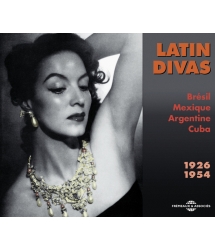
BRESIL MEXIQUE ARGENTINE CUBA
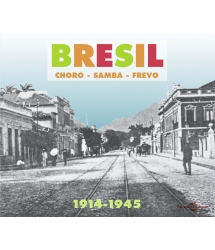
CHORO - SAMBA - FREVO 1914-1945
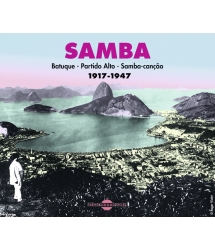
BATUQUE - PARTIDO ALTO - SAMBA CANCAO 1917 - 1947
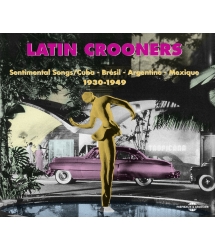
SENTIMENTAL SONGS 1930 - 1949




-
PisteTitleMain artistAutorDurationRegistered in
-
1Vereda TropicalGarcia00:02:551954
-
2Contigo En La DistanciaBarrios00:03:091954
-
3Tu Me AcostumbrasteGuillot00:03:351954
-
4Besame MuchoGatica00:03:091953
-
5Amar Y VivirReyConsuelo Velazquez00:02:431952
-
6Piel CanelaBarrios00:02:361953
-
7Me Lo Dijo AdelaCubanito00:02:381955
-
8Bim Bam BumRodriguezCamacho J.00:03:011942
-
9MayaguezRodriguez00:02:571952
-
10AngustiaGranda00:02:551956
-
11Ella EllaCapo00:03:021953
-
12VanidadVargas00:02:371950
-
13Oracion CaribeRios00:03:171940
-
14Lagrimas De SangreArvizu00:02:471950
-
15Lagrimas De NoviaVargasLipesker S.00:02:521947
-
16La Ultima NocheMartinez00:02:221947
-
17PerfidiaCugat00:03:041945
-
18Nueva CongaCugatMiguelito Valdes00:02:471940
-
PisteTitleMain artistAutorDurationRegistered in
-
1Mambo N 8Cugat00:02:371952
-
2Mambo JumboMorales00:03:101952
-
3La GuajiraAzpiazu00:03:101933
-
4El CucuCapo00:03:051955
-
5DesesperadamenteVargas00:03:101941
-
6Recuerdos De YpacaraiBarriosZuleima De Mirkin00:02:491955
-
7Esperame En El CieloCapo00:03:151956
-
8Cosas PequenasVargasMores M.00:03:091947
-
9HipocritaFernando00:02:511950
-
10Palabras De MujerBarrios00:03:041950
-
11JurameRamirez00:03:231954
-
12Tres PalabrasInglez00:02:541940
-
13Canta ComigoVargasJorge D. Monsalve00:03:011950
-
14CaminandoAzpiazu00:02:571933
-
15The Peanut VendorAzpiazu00:03:331930
-
16Cuando Te Beso TiembloCugat00:03:081952
-
17Cuando Duermas TuVargasDuc Richardo00:03:001944
-
18LejaniasAguayo00:03:321940
VEREDA TROPICAL
VEREDA TROPICAL
36 chefs-d’œuvre d’amérique latine / 36 masterpieces of south america
1933-1956
CUBA - MEXIQUE - PORTO RICO
Le triangle amoureux du Bolero : Cuba, Mexique et Porto Rico
Ce fut dans le triangle musical sis entre Cuba, Mexique et Porto Rico que sont nées les plus belles pages de l’histoire de la musique populaire latino-américaine. Cette anthologie présente donc divers styles musicaux de langue hispanique et concède volontairement au bolero une place centrale. Pourquoi ? Parce qu’il est impossible de rester insensible au charme sulfureux du bolero et qu’il a marqué de manière indélébile le cœur et les esprits de tout le peuple latino-américain. Oui, le bolero n’a qu’un sujet : l’amour, mais c’est un sujet inépuisable et ses variations autour des ruptures et abandons portées par des voix comme celles d’Olga Guillot ou de Pedro Vargas ont une telle incandescence qu’on ne peut qu’y succomber. Comme on ne restera pas non plus de marbre à l’écoute de la nostalgie fataliste indienne des chansons du Paraguay ou de la verve des Guajira et du mambo.
Le bolero comme expression de l’âme latino-américaine
Aujourd’hui, on reconnaît au bolero des racines européennes. Il serait né, il y a bien longtemps en Espagne, lors des fêtes gitanes où les participants, sur une assise musicale de guitare et de battements de mains, dansaient en des mouvements amples et rapides rappelant le vol des oiseaux. C’est de là que viendrait le nom de “bolero” qui emprunterait à “volero”, du verbe voler. Si Cuba passe pour être la terre-mère du bolero, c’est qu’il est de coutume de dire que le genre est définitivement né à Santiago de Cuba, vers 1885, avec la composition “Tristezas” de José Pepe Sanchez, le chanteur, qui fut le premier à structurer le bolero en composition propre. Mais il serait également possible d’avancer que le bolero aurait épousé les mesures de la contre-danse du XVIIIe siècle et qu’il aurait évolué, au XIXe siècle, en empruntant des caractéristiques du danzón et de la habanera. “Aquellos Ojos Verdes” du compositeur cubain Nilo Menendéz, en 1929, fut le premier grand succès international du bolero. L’auteur raconte que la nuit même où il fit la connaissance d’une jolie fille aux yeux verts, il en tomba éperdument amoureux et demanda immédiatement au poète Adolfo Uretra, par ailleurs frère de cette accorte personne, de lui écrire les paroles qui immortalisèrent la rencontre et la chanson. Dès les années quarante, le bolero s’était déjà imposé à Cuba avec des compositeurs comme Oswaldo Farrés (Toda Una Vida), Bobby Collazo (La Última Noche), César Portillo de La Luz (Contigo En La Distancia) et Frank Domínguez (Tú Me Acostumbraste).
Le bolero au Mexique
“Si tu as un profond chagrin, pense à moi ; si tu as envie de pleurer, pense à moi” dit une chanson d’Agustín Lara, et c’est comme une esquisse des thèmes fondateurs du bolero. Auteur de plus de 500 chansons dont on estime qu’au moins 162 sont des boleros, Agustín Lara a établi, dans les années vingt, la forme classique du genre : 32 mesures divisées en deux parties, les 16 premières mesures en ton mineur et les 16 autres en ton majeur. Il prendra pour source d’inspiration unique la femme dont il fragmente le corps, avec une grande sensualité : les yeux, la bouche, la peau, la voix, tout est objet du désir. Suivant en cela la tradition de l’amour courtois, il représente la passion amoureuse comme une force insurmontable, inexplicable, comme un destin fatal plus fort que la mort. L’essence du bolero est désormais figée dans l’inconscient latino-américain. Pendant les années quarante, l’accueil du marché nord-américain fut déterminant pour le succès du bolero mexicain. “Frenesí” et “Perfidia” d’Alberto Domínguez ont connu de nombreuses versions et les années 1945/ 1958 sont bien celles qui marquent l’âge d’or des rythmes latino-américains. Ces années portent la griffe de Maria Grever (Jurame), de Gonzalo Curiel (Vereda Tropical), d’Armando Manzanero (Contigo Aprendí et Esta tarde vi volver), de Gabriel Ruiz (Desesperamente) et de Consuelo Velázquez (Amar y Vivir ainsi que Bésame Mucho). C’est aussi au Mexique, où il a vécu seize ans, que le compositeur portoricain Rafael Hernández a composé l’essentiel de son œuvre. Il est vrai, aussi, que le Mexique avait, à l’époque, des studios de cinéma, des radios et des moyens considérables pour l’industrie de l’entertainment.
Le bolero portoricain
Si les boleros cubains et mexicains restent traditionnellement marqués au fer rouge de l’amour, de la haine, de la jalousie, de l’incertitude et de l’extase – bref, tous les éléments fondamentaux du feuilleton romanesque latino-américain – le bolero portoricain, lui, se différencie en étant fondamentalement narratif et descriptif. Il existe quelques raisons à cela : l’influence de trois genres musicaux purement portoricains, le Aguinaldo, le Villancio et le Plena. Comme, dans les années trente, l’essentiel des boleros portoricains a été produit aux USA pour un public composé d’émigrés, les thèmes tournaient autour de la nostalgie de la patrie lointaine. Mais pour capter l’attention de la classe moyenne, il était fréquent que les compositeurs fassent appel à des amis poètes pour créer un langage épuré et plus moderne. Les compositeurs qui ont véritablement enrichi le répertoire du bolero sur la base de cette tendance narrative et descriptive sont : Rafael Hernández, Pedro Flores, Bobby Capó et Tito Hernández. Auteur de plus de mille chansons, Rafael Hernández est considéré comme le plus doué d’entre eux et son “Lamento Boricano” est vraiment un des fleurons de toute la musique latino-américaine.
L’héritage rythmique de Cuba
Avec la rumba, la guajira, le mambo et le cha- cha-chá, nés de l’amalgame des formules du folklore espagnol et des rythmes africains apportés à Cuba par les esclaves noirs, nous sommes face à une exubérante variété musicale et une opulence de modèles rythmiques.
La rumba : Dérivée du mot espagnol “rumbo” qui désigne les fêtes nocturnes où l’on se rassemble pour danser et chanter, la rumba vient également du versant afro-espagnol, avec une plus forte prégnance afro qu’espagnol pour dire vrai. Née à la fin du XVIIIe siècle dans les quartiers urbains pauvres et les zones semi-rurales de mono-culture de la canne à sucre où prédominait la population noire, la rumba est destinée à la danse avec accompagnement chanté. Tout au début, on utilisait, pour marquer l’accompagnement rythmique, des caisses de morue (cajones) ou tout simplement des caisses en bois et ce n’est que par la suite qu’on se mit à jouer des congas accompagnées par des “claves”. Il n’y a aucun élément rituel dans cette musique profane, quoi que le rythme très africain puisse laisser entendre des réminiscences de la “santeria”.
La Guajira : C’est une chanson paysanne en rythme 3/4 ou 6/8 comme la valse. Les paroles en quatrains ou décasyllabes abordent la vie rurale et la beauté des paysages. La plus célèbre, Guarija Guantanamera, a été composée par Joseíto Fernández, en 1928, en s’inspirant d’un air folklorique.
Le Mambo : Comme la rumba, le mambo est dédié à la danse avec accompagnement de parties chantées. Il dérive du “Danzón de ritmo nuevo” créé par Arcaño y Sus Maravillas. En 1937, le violoncelliste cubain Orestes López, et son frère Israel López (Cachao), qui jouaient aux côtés du flûtiste Antonio Arcaño, composent un danzón intitulé “Mambo” avec des motifs syncopés empruntés au “son” (un genre musical) et des variations improvisées influencées par le jeu des orchestres de jazz. Dámaso Pérez Prado, pianiste cubain, lui rassemble tous ces éléments et structure vraiment ce nouveau genre des Caraïbes, en mettant en place un orchestre avec une phalange de saxophones qui joue la syncope dans les motifs musicaux, une phalange de trompettes qui exécutent la mélodie et la contrebasse pour assurer l’accompagnement sur la pulsation rythmique des timbales, congas et bongos. En 1948, Pérez Prado et son orchestre, en tournée au Mexique, crée l’événement dans les clubs et les théâtres de la capitale et leur succès fut tel que le cinéma s’empare alors du genre et le diffuse dans toute l’Amérique. De cette mode surgira ce que l’on a appelé le “bolero-mambo” et toutes les grandes voix de la chanson populaire ne resteront pas étrangères à l’influence du mambo.
Le cha-cha-chá : C’est une danse apparue vers 1954 et son inventeur est le violoniste cubain Enrique Jorrín, de “la Charanga Orquesta América”. Remarquant les difficultés des danseurs avec le modèle “danzón-mambo” (les pas ne sont pas marqués sur le temps, mais sur la syncope, donc à contretemps), Enrique Jorrín cherche une formule plus simple et commence alors à composer des choses moins syncopées afin que les danseurs puissent se baser uniquement sur la mélodie. (L’accentuation portée sur la quatrième croche de la mesure, caractéristique du mambo, se déplace sur le premier temps dans le cha-cha-chá). L’accompagnement, par contre, reste toujours rythmé. Ce mélange - la mélodie sur le temps et l’accompagnement toujours rythmé sur le contretemps - est une des caractéristiques essentielles du nouveau genre cha-cha-chá.
Propos autour des choix artistiques de ce disque
Du côté du Mexique
Vereda Tropical : Impossible de ne pas choisir le titre de cette chanson comme titre de notre anthologie car elle est bien trop symptomatique de l’imaginaire du peuple latino-américain, avec son décor de nuit tropicale en bord de mer et sa nostalgie des amours déçus. “Par une nuit calme, dit la chanson, je prends le sentier tropical/Avec son parfum humide/ Et par la brise qui vient de la mer/ On écoute la rumeur d’une chanson/ Chanson qui parle d’amour et de piété/ Avec elle, je suis allé nuit après nuit jusqu’à la mer/ Pour embrasser sa bouche fraîche d’amour/ Elle a juré de me désirer toujours plus/ Et de ne jamais oublier ces nuits-là au bord de la mer/ Aujourd’hui, il ne me reste que le souvenir/ Mes yeux meurent de pleurer/ Et mon âme meurt d’attendre/ Pourquoi est-elle partie/ Tu l’as laissé partir/ Sentier tropical/ Rend-la moi/ Je veux embrasser sa bouche à nouveau au bord de la mer/ Sentier Tropical”. Son auteur Gonzalo Curiel Barba (1904-1958) est né à Guadalajara, au Mexique. Avec ses thèmes liés aux souvenirs et aux lamentations de l’amour perdu, il est un compositeur particulièrement représentatif de la chanson romantique mexicaine.
Bésame Mucho : Ce bolero composé en 1941 est la carte de visite de Consuelo Velázquez (1924-2005), qui n’avait que 17 ans lorsqu’elle l’a composé. Mexicaine, née à Guzma, un 21 août, elle a commencé ses études musicales à l’âge de 6 ans avant d’obtenir un diplôme de pianiste concertiste. Elle fut même soliste de l’Orchestre Symphonique National du Mexique et de l’Orchestre Philarmonique de l’Universidad Nacional Autonoma de Mexico. Bésame Mucho fut adaptée en anglais par Nat King Cole et c’est à partir de cet enregistrement que la chanson a connu un succès fulgurant et un nombre de versions qu’il n’est plus possible de calculer. Lucho Gatica, un des interprètes majeurs du bolero, en fit, bien entendu, une version de référence. Luis Gatica, plus connu sous le nom de Lucho Gatica, était né au Chili en 1928. Après un premier disque enregistré avec son frère Arturo, il abandonne le tango qui commence à perdre de l’influence dans son pays pour se dédier au bolero en s’inspirant d’Olga Guillot et de Bobby Capó. Après “Me Importas Tú”, son enregistrement de 1951, il enregistre deux autres succès : “Contigo En La Distancia” de Portillo de la Luz, en 1952, et “Bésame Mucho”, en 1953. À partir de cette date, il s’installe définitivement au Mexique et rejoint le label Capitol.
Amar y Vivir est un autre grand succès de Consuelo Velázquez. Il est interprété ici par Ruy Rey (son nom véritable est Domingos Zeminian), un brésilien de São Paulo, né en 1915. Il avait monté un orchestre de cordes spécialisé dans les rythmes latins. Dans les années cinquante, il était le rival de Gregório Barrios, dans le cœur des brésiliens pour l’interprétation de boleros et autres chansons latines .
Oración Caribe, Lágrimas de Sangre, Palabras de Mujer : Né au Mexique, Agustín Lara (1900-1970) fut initié à la musique par son propre père. En cachette, il commence à travailler comme pianiste au “Clube das Señoras”, un cabaret pour noctambules de mauvaise réputation. Comme il n’avait que 13 ans et pour le remettre dans le droit chemin, son père décide de l’enfermer dans une école militaire. À la sortie de l’armée, en 1927, il replonge dans le monde de la musique et, dès 1929, des chanteurs célèbres comme Juan Arvizu ou Maruca Pérez divulguent ses premières chansons. Compositeur particulièrement fécond, ses œuvres rencontrent un succès jamais démenti. Ses paroles abordent des thématiques variées et sont riches en métaphores d’excellente qualité. On pourrait s’aventurer à dire qu’il est le miroir de l’identité mexicaine.
Desesperadamente : Né à Guadalajara, Mexique, Gabriel Ruiz (1908-1999) abandonne ses études de médecine pour suivre comme boursier 4 années d’études au Conservatoire National de Musique où il obtient un prix de piano. Compositeur de boleros, considéré comme un fin mélodiste, il est l’auteur du célèbre “Desesperadamente” chanté dans notre anthologie par Pedro Vargas qui en donne la version de référence.
Vanidad, Lágrimas de Novia, Cosas Pequeñas, Canta Comigo : Né à San Miguel de Allende, au Mexique, Pedro Vargas Mata (1906-1989) fut dénommé “El ténor das Americas”. Choisi par Agustín Lara comme son chanteur officiel, en 1930, il fut l’interprète le plus aimé du public de son pays, avec également une ample reconnaissance dans toute l’Amérique du Sud. Tout au long d’une carrière bien remplie, il a chanté tous les genres de la musique populaire et son style inimitable révèle un talent prodigieux dans la manière d’aborder le bolero.
Perfidia : Pianiste et compositeur, Alberto Domínguez Borras (1911-1975) est né au Mexique, à San Cristobal de las Casas, dans la région de Chiapas. Avec ses frères Armando “Chamaco”, Abel et Ernesto, il forme l’ensemble de marimbas “Lira de San Cristobal” (à l’époque, les orchestrations font beaucoup appel aux marimbas). Il est l’auteur de “Frenesí” et de “Perfidia”, deux thèmes repris par de nombreux orchestres de jazz dont ceux de Benny Goodman et d’Artie Shaw.
Jurame : Mexicaine, née à Guanajuato (1884 -1951), Maria Grever est fille d’un père espagnol et d’une mère mexicaine. Alors qu’elle n’a que six ans, ses parents s’installent en Espagne. Avant de partir vivre à New York, en 1916, elle fut l’élève de Claude Debussy. Parmi les 500 chansons qu’elle a composées, on retiendra le fantastique “Jurame”, “Te quiero” et “Cuando Vuelva a tu lado”.
Hipócrita : A la fin des années quarante, quand le Mexique se libère de la répression que “La Liga de la decencia” avait établie (cette répression morale se traduisait entre autres par une censure des paroles des chansons), apparaît un type de bolero appelé “Cabaretero” et son principal interprète fut Fernando Fernandez. Surnommé le “crooner de Mexico”, Fernando Fernandez ouvre une nouvelle manière de chanter et de dire le bolero, un style assez éloigné des valeurs vocales établies préalablement par les grands crooners tels que Juan Arvizu, José Mojica ou Ortiz Tirado.
Du côté de Cuba
Contigo En La Distancia : Cette chanson du compositeur et guitariste César Portillo de la Luz a fait le tour du monde. Né à La Havane, le 31 octobre 1922, son auteur faisait partie d’un groupe de compositeurs cubains, qui, dans les années 40 et 50, créèrent un mouvement “Le Feeling” (ou “Filin”) au style très expressif s’aventurant vers le jazz. La mélodie est harmoniquement enrichie avec des accords tonals et extra-tonals d’évidente influence nord-américaine alors que les paroles créent un dialogue réaliste avec le public en faisant sourdre l’émotion inhérente au bolero. Les thèmes de César Portillo de la Luz furent repris par Nat King Cole, Lucho Gatica et Pedro Vargas, entre autres. Le chanteur Gregório Barrios, né à Bilbao, ville basque d’Espagne, le 31 janvier 1911, a longtemps vécu en Argentine et au Brésil. Son répertoire couvre presque tous les boleros à succès des années cinquante. Sa discographie est riche et les enregistrements ont été réalisés pour le label Odeon, à São Paulo et en Argentine. Gregório Barrios s’est éteint en décembre 1978 à São Paulo.
Tú Me Acostumbraste : Ce chef d’œuvre du compositeur et pianiste cubain Frank Domínguez (né en 1927, à Matanzas,) a été interprété par Olga Guillot, accompagnée par le Gran Orquesta Riverside. Encore un bolero qui fit le tour du monde. Olga Guillot est née à Santiago de Cuba au sein d’une famille d’artistes et elle fut découverte par le musicien cubain Facundo Rivero qui lui fit faire ses premiers pas à La Havane. Toutefois, ce fut l’immense chanteur Miguelito Valdés qui lui a permis d’enregistrer pour le label Decca à New York. En 1954, elle signe un contrat d’exclusivité avec le label Puchito et enregistre le fameux bolero “Miénteme” du compositeur mexicain Armando “Chamaco” Domínguez. Chanteuse d’exception, Olga Guillot dégage un feeling qui reste d’une grande modernité. Le Gran Orquesta Riverside emmené par Pedro Vila fut, à partir de 1947, une des plus prestigieuses formations cubaines.
Cuando te Beso Tiemblo, Nueva Conga : Né en Espagne, Xavier Cugat (1900-1990) était arrivé à Cuba à l’âge de quatre ans. Il fit de sérieuses études musicales et devint premier violon de l’Orchestre Symphonique de La Havane. Lorsqu’il émigre aux USA à la fin des années vingt, il participe grandement, avec son groupe “Cugat And His Gigolos”, à l’introduction des rythmes tropicaux. Son orchestre, qui s’installe en résidence à l’Hôtel Waldorf-Astoria, intervient dans de nombreux films. Personnalité controversée et d’un caractère difficile si l’on en croit la rumeur, il ne fut pas toujours à la hauteur de ses dons musicaux mais il n’en reste pas moins une des valeurs de la musique latino-américaine.
Angustia : Bienvenido Granda (1915-1983), affectueusement surnommé “la moustache chantante” est né à La Havane. Après avoir participé à de nombreuses émissions de radio, il rejoint La Sonora Matancera en 1940. Nombreux sont les spécialistes qui considèrent qu’il fut le meilleur chanteur à s’être exprimé dans ce groupe prestigieux qui connut plusieurs solistes de grand talent. Ouvert à de nombreux genres musicaux caribéens, il interprète, avec son timbre de voix caractéristique, le bolero de manière originale. La Sonora Matancera vit le jour comme sextuor en 1924 à Matanzas et débarque à La Havane en 1926. Groupe phare de la musique cubaine, très porté vers la musique gaie et dansante, La Sonora Matancera a accompagné les premiers pas d’artiste de Célia Cruz. La Sonora Matancera, qui a rejoint les USA en 1960, n’a pas manqué d’y imprimer sa marque.
La Última Noche : Cubain, Roberto Collazo Pena, plus connu sous le nom de Bobby Collazo (1922-1989) est né à Marianao. Après des études musicales, il fonde un quartet vocal. Il vit un temps au Mexique puis émigre aux USA en 1952. Son premier succès fut “Rumba Matumba”, mais il est surtout reconnu pour avoir été l’auteur de “Vivir de Los recuerdos”, “Tenia que ser asi” et de “La Última Noche” toutes devenues des standards. Chucho Martínez (1917-1988) considéré comme l’un des meilleurs interprètes de boleros est né à Vera Cruz au Mexique.
Mambo n° 8 : Le pianiste cubain, Dámaso Pérez Prado (1916-1989) commence ses études de piano dans sa ville natale avant de s’installer à La Havane en 1940 et d’y devenir le pianiste de l’orchestre Casino de la Playa et de l’orchestre Cabaret Kursal. C’est en 1948/ 1949, au Mexique, qu’il met définitivement au point la formule du mambo et qu’il commence à enregistrer pour RCA Victor. Alors que ses premières compositions enregistrées étaient des morceaux lents comme : Jose y Macamé, il connaîtra un succès immédiat avec ses mambos dont les très célèbres: Mambo n° 5 et Mambo n° 8 (interprété ici par l’orchestre de Xavier Cugat), Patrícia, Que Rico El Mambo. Contemporain du mouvement “Feeling”, le mambo est plus dédié à la danse alors que le feeling lui impose des paroles plus denses et un chant soliste.
Tres Palabras : Né à Cuba, compositeur, animateur de radio, et publicitaire, Oswaldo Farrés (1902-1985) fut aussi l’auteur de chansons et de boleros comme Toda una vida, Quizás, quizás, quizás, Para que sufra, Tres Palabras, rien de moins!. Dans notre anthologie, Tres Palabras est interprété par Roberto Inglez et son orchestre.
El Manisero (le vendeur de cacahuètes) : Ce Son-pregón du compositeur, pianiste et chef d’orchestre Moisés Simons (1889-1945), auteur de nombreuses comédies musicales, a été composé spécialement pour la chanteuse Rita Montaner en 1928. Deux ans plus tard, l’orchestre Casino de La Havana de Don Azpiazu avec son chanteur Antonio Machín, se présente au théâtre Palace de New York et y fait entendre pour la première fois aux USA la musique cubaine, interprétée avec les instruments traditionnels comme les maracas, les claves, les bongos, les congas et les timbales. Mais le public américain a surtout succombé devant l’interprétation théâtralisée de la chanson, avec Antonio Machín habillé en marchand de cacahuètes poussant son chariot typique sur un arrangement de Phil Fabielo qui valorise les percussions. Antonio Machín, qui est réellement un chanteur puissant, finira sa carrière en Espagne. Notre enregistrement de Don Azpiazu/ Antonio Machín est celui qui est resté gravé dans les mémoires mais il existe de nombreuses versions de El Manisero (The Peanut Vendor, pour les américains) dont on retiendra en priorité celle enjouée et généreuse de Louis Armstrong et l’interprétation de Bola de Nieve, aussi génialement déstructurée que la version de Pérez Prado, à son piano en 1948. El Manisero ou le thème qui ne vous sort pas de la tête une fois qu’il s’y est insinué.
Du côté de Porto Rico
Piel Canela, Ella Ella, El Cucu, Esperame en el Cielo : Chanteur et compositeur portoricain, Bobby Capó est né le 1er janvier 1922. Pedro Almodovar a choisi Esperame en el Cielo pour illustrer son film “Matador”. Félix Manuel Rodríguez Capó (il a retenu le nom de sa mère comme nom artistique) a commencé sa carrière en remplaçant le chanteur Pedro Ortiz Dávila, alias Davilita, dans le Cuarteto Victoria, dirigé par son compatriote Rafael Hernández. Lorsqu’il s’installe aux Etats-unis dans les années quarante, il rejoint l’orchestre de Xavier Cugat avant de se faire reconnaître, par son timbre de voix et son phrasé bien personnels, comme un des principaux interprètes de toute la musique latino-américaine. Ella Ella et El Cucu sont bien représentatives de l’aspect narratif des chansons portoricaines. Bobby Capó était aussi un compositeur doué et sa chanson Piel Canela est devenu un standard international.
Bim Bam Bum, Mayagüez. Autre portoricain, né à San Juan : Norosvaldo Morales (1911-1964) dit Noro Morales. Compositeur, tromboniste et pianiste, il forme avec ses frères “La Orquesta de Los Hermanos Morales” qui sera rebaptisée en 1938 “Noro Morales y Su Orquesta”. À New York, où il décide de résider comme nombre de portoricains, il côtoie son compatriote Rafael Hernández et se produit avec son orchestre dans les meilleurs clubs de la ville : Stork Club, Copacabana, La Conga… Des chanteurs comme Machito ou Tito Rodríguez, des percussionnistes comme Tito Puente, Ray Romero ou Sabu Martínez, sont passés par son orchestre. Il fut bien l’un des musiciens les plus marquants de la musique latino-américaine dans les années quarante et cinquante et il fut l’un de ceux qui propulsèrent la rumba sur le devant de la scène. Bien qu’il soit né en République Dominicaine, Tito Rodríguez a réalisé la majeure partie de sa production artistique à Porto Rico. Il donnait une forme personnelle bien sentimentale aux boleros qu’il interprétait. Il est sans conteste une des figures majeures de la musique des Caraïbes. Le chanteur Pedro Rodríguez de Garcia, alias Rodríguez Pellin, est lui aussi né à Porto Rico, en 1926. Devenu un spécialiste de ce que l’on appelle aujourd’hui la salsa, il a travaillé aux Etats-Unis, avec Noro Morales, Rafael Elvira, Tito Puente et Ismael Rivera, entre autres.
Du côté de Paraguay
Recuerdos de Ypacaraí et Lejanías : Demetrio Ortiz (1916-1975), le compositeur de Recuerdos de Ypacaraí, fut membre du Trio Asunceno, un trio paraguayen qui se produira également au Brésil et sa chanson interprétée par Gregório Barrios connut un large succès dans toute l’Amérique latine. De son côté, Lejanías a été composée par la paraguayen Herminio Gimenez qui l’interprétait pour partie en espagnol et pour partie en langue guaraní, la langue d’un des principaux peuple indiens. Avant 1928, la musique paraguayenne tournait autour des polkas et des compuestos. C’est avec la chanson “Jejui” de José Asuncion Flores que la “guarania” s’impose. Le mot Guarania est le féminin de guaraní et veut dire indienne. De fait, la reconnaissance de la guarania coïncide avec une période de développement socio-politique du Paraguay où les forces progressistes cherchent à valoriser la musique autochtone. Samuel Aguayo (1909 -1993) fut considéré comme le plus grand chanteur paraguayen et il enregistra pour RCA Victor en Argentine.
Teca Calazans
© 2007 FRÉMEAUX & ASSOCIÉS/GROUPE FRÉMEAUX COLOMBINI SAS
Remerciements : Norez et Paulo Cesar Andradé pour l’accès à leurs archives sonores.
English Notes
VEREDA TROPICAL - 36 Latin American masterpieces 1933-1956
The Bolero triangle: Cuba, Mexico and Puerto Rico
The most striking pages of the history of popular Latin American music were written in the musical triangle formed by Cuba, Mexico and Puerto Rico. Hence this anthology covers various musical styles in Spanish with deliberate emphasis on the bolero. Why? Because it is impossible to remain unmoved by the charm of the bolero that has left an indelible mark on the hearts of all Latin Americans. Although a bolero only ever speaks of love, the endless variations on loss and abandon, when interpreted by brilliant vocalists such as Olga Guillot or Pedro Vegas, cannot fail to move. Similarly no-one can be indifferent to the stoic Indian nostalgia of the Guajira or mambo.
The bolero as an expression of the Latin American spirit
Today the bolero’s European roots are not disputed. It was born long ago in Spain during gypsy festivities when participants, to the accompaniment of a guitar and hand clapping, would dance, moving in wide, soaring arcs reminiscent of the flight of a bird. Hence the name “bolero” from a corruption of “volero” (to fly). However, Cuba is generally accepted as the real cradle of bolero as it was in Santiago, around 1885, that singer Pepe Sanchez with his composition Tristezas was the first to write a true bolero. Yet it also possible to argue that the bolero’s beat contains echoes of the contre – an 18th century dance that evolved in the 19th century by borrowing from the danzon and the babanera. Aquellos Ojos Verdes written by Cuban composer Nilo Menendéz in 1929 was the first big international bolero hit. The composer recounts that the night he met a pretty girl with green eyes he fell hopelessly in love and immediately asked her brother, poet Adolfo Uretra, to write the lyrics that would immortalise the meeting and the song. By the 40s the bolero was already well established in Cuba with composers such as Oswaldo Farrés (Toda Una Vida), Bobby Collazo (La Ultima Noche), César Portillo de La Luz (Contigo En La Distancia) and Frank Domínguez (Tú Me Acostumbraste).
The bolero in Mexico
“Whenever you’re feeling unhappy, think of me: if you feel like crying, think of me” from a song by Agustín Lara, sums up the basic theme of the bolero. Author of over 600 songs, including at least 162 boleros, in the 20s Lara laid down the classic form of the genre: 32 bars divided into two parts, the first 16 bars in a minor key, the other 16 in a major key. His sole inspiration was the female body that he described with extreme sensuality: eyes, mouth, skin, voice are all objects of desire. Following the tradition of courtly love, he depicts passionate love as an insurmountable, inexplicable force, a fatal destiny stronger than death. Bolero would henceforth be an integral part of the Latin American subconscious. During the 40s its popularity on the North American market was an important factor in the success of Mexican bolero. Between 1945 and 1958 numerous versions of Frenesí and Perfidia by Alberto Domínguez marked the golden age of Latin American rhythms. This period was also rich in compositions from Maria Grever (Jurame), Gonzalo Curiel (Vereda Tropical), Armando Manzanero (Contigo Aprendi Et Esta Tarde Vi Volver), Gabriel Ruiz (Desesperamente) and Consuelo Velasquez (Amar Y Vivir and Bésame Mucho). It was also in Mexico, where he lived for sixteen years, that Puerto Rican composer Rafael Hernández produced most of his work. In addition, at this time Mexico had cinema and radio studios and a thriving entertainment business.
The Puerto Rican bolero
While Cuban and Mexican boleros traditionally remain based on love, hate, jealousy, uncertainty and ecstasy – all the basic elements of a Latin American soap opera – the Puerto Rican bolero differs in being fundamentally narrative and descriptive. There are several reasons for this: the influence of three purely Puerto Rican musical genres, the Aguinaldo, the Villancio and the Plena. In the 30s, as most Puerto Rican boleros were produced in the USA for an immigrant audience, the themes turned on nostalgia for the homeland. However, to capture the attention of the middle classes, composers often called on poet friends to create more refined and modern lyrics. Composers who certainly enriched the narrative and descriptive bolero were Rafael Hernándes, Pedro Flores, Bobby Capó and Tito Hernándes. With over a thousand songs to his name Rafael Hernández is seen as the most gifted and his Lamento Boricano is indeed one of the jewels of Latin American music.
Cuba’s rhythmic inheritance
Rumba, guajira, mambo and cha-cha-chá, resulting from a blend of Spanish folklore and African rhythms brought into Cuba by black slaves, created an exuberant musical variety and a wealth of rhythmic models.
The rumba: derived from the Spanish word “rumbo” denoting a nocturnal festival when people get together to dance and sing, the rumba also comes from the Afro-Spanish side, with the African influence the more dominant. Born at the end of the 18th century in poor urban districts and semi-rural zones devoted to sugar cane production with a large black population, the rumba was intended for dancing with a vocal accompaniment. At first the rhythm was marked by drumming on cajones or simple wooden crates and it was only later that conga drums were used accompanied by “blocks”. There was no ritual element in this secular music although the extremely African rhythm was reminiscent of the “santeria”.
The mambo: like the rumba, the mambo is dedicated to dancing with vocal accompaniment. It derives from Danzon De Ritmo Nuevo by Arcaño y Sus Maravillas. In 1937 Cuban violicellist Orestes López and his brother Israel López (Cachao) who both played with flautist Antonio Arcaño, composed a danzon entitled Mambo with syncopated patterns borrowed from “son” (a musical genre) and improvised variations influenced by jazz. Cuban pianist Dámaso Pérez Prado gathered all these elements together to create a new Caribbean genre, forming an orchestra with a saxophone section to play the syncopated parts, a trumpet section to interpret the melody and a double bass to lead the rhythmic backing provided by kettle drums, congas and bongos. In 1948 Pérez Prado and his orchestra, on tour in Mexico, took the capital’s theatres and clubs by storm and their success was such that the cinema took up the genre and spread it throughout America. What came to be known as the “bolero-mambo” grew out of this craze and the best popular vocalists were also influenced by the mambo.
The cha-cha-chá: This is a dance that appeared around 1954, its inventor Cuban violinist Enrique Jorrín of the “Charanga Orquestra América”. Noticing the problems some dancers had with the “danzón-mambo” (the steps are not on the beat but on the off beat), Jorrín sought a simpler formula and began to compose less syncopated pieces so that dancers could just follow the melody. (The accent on the fourth beat of the bar, typical of the mambo, is moved to the first beat in the cha-chá). This mixture – the melody on the beat and the accompaniment always on the off beat – was one of the essential characteristics of the new cha-cha-chá genre.
The choice of titles on this CD
From Mexico
Vereda Tropical: The title of this song was the natural choice for the title of our collection for it is completely representative of the Latin American imaginative make up, with its setting of a tropical night by the sea and its yearning for a lost love: “On a calm night, I took the tropical path, smelling of damp, And in the sea breeze I hear the strains of a song, A song that speaks of love and devotion, Night after night I went to the sea with her, to kiss her mouth fresh with love, She swore to love me forever, and to never forget these nights by the sea. All that remains today is the memory, my eyes are red with weeping, And my soul is dying with waiting. Why did she leave? You let her go, tropical path, Bring her back to me. I want to kiss her mouth again beside the sea, tropical path”. Its composer Gonzalo Curiel Barba (1904-1958) was born in Guadalajara, Mexico. His themes of memories and lamentations for lost love, his compositions are particularly representative of romantic Mexican songs.
Bésame Mucho: This bolero composed in 1941 is typical of Consuelo Velásquez (1924-2005) who was only 17 when he composed it. Mexican, born on 21 August, he began studying music at the age of 6 leading to his diploma as a concert pianist. She even became a soloist with Mexico’s National Symphony Orchestra and the Philharmonic Orchestra of the National Independent University of Mexico. Bésame Mucho was adapted into English by Nat King Cole and it was this recording that made the song such a resounding hit and led to numerous other versions, including one by Luis Gatica, one of the major bolero singers. Known as Lucho Gatica, he was born in Chile in 1928. After a first recording made with his brother Arturo, he abandoned the tango which was beginning to lose popularity in his homeland to concentrate on the bolero, inspired by Olga Guillot and Bobby Capó. Following Me Importas Tù, recorded in 1951, he had two more hits with Contigo En La Distancia by Portillo de la Luz in 1952 and Bésame Mucho in 1953. In the same year he settled permanently in Mexico and signed up with Capitol.
Amar Y Vivir was another great hit for Consuelo Velásquez. It is interpreted here by Ruy Rey (his real name Domingos Zeminian), a Brazilian from Sao Paulo, born in 1915. He formed a string orchestra that specialised in Latin rhythms. In the 50s he rivalled Gregorio Barrios in Brazilian hearts with his boleros and other Latin American songs.
Oración Caribe, Lágrimas De Sangre, Palabras De Mujer: Born in Mexico Agustín Lara (1900-1970) was introduced to music by his father. He began to work in secret as pianist at the “Clube das Señhoras”, an ill-famed cabaret for night birds. As he was only 13 and to set him on the right path his father decided to send him to an army school. On leaving the army in 1927 he returned to the music milieu and, from 1929, famous singers such as Juan Arvizu or Maruca Pérez sang his first songs. A particularly fertile composer, his work was extremely successful. His lyrics are based on a variety of themes and he introduces some striking metaphors. He can be said to be a true reflection of the Mexican identity.
Desesperadamente: Born in Guadalajara, Mexico, Gabriel Ruiz (1908-1999) gave up medical studies to take up a four-year scholarship at the National Music Conservatory where he was awarded a piano prize. Composer of boleros, considered an excellent melodist, he composed the well know Desesperadamente sung here by Pedro Vergas.
Vanidad, Lágrimas De Novia, Cosas Pequenas, Canta Comigo: Born in San Miguel de Allende, Mexico, Pedro Vargas Mata (1906-1989) was dubbed the “Latin American tenor”. Chosen by Agustín Lara in 1930 as his official singer he was not only the favourite singer in his own country but was also popular in the whole of South America. Throughout his successful career he sang all types of popular music and his inimitable style includes an enormous talent for interpreting boleros.
Perfidia: Pianist and composer Alberto Domínguez Borras (1911-1975) was born in San Cristobal de las Casas, Mexico, in the Chiapas region. With his brothers Armando “Chamaco”, Abel and Ernesto he formed a marimba (a type of xylophone) group “Lira de San Cristobal” (at the time orchestrations often featured marimbas). He composed Frenesi and Perfidia, both themes reprised by numerous jazz orchestras including those of Benny Carter and Artie Shaw.
Jurame: Born in Guanajuato, Mexico Maria Grever (1884-1951) was the daughter of a Spanish father and Mexican mother. When she was only six years old her parents moved to Spain. Before she herself left for New York in 1916 she was Claude Debussy’s pupil. Among the 500 songs she wrote the fantastic Jurame, Te Quiero and Cuando Vuelva A Tu Lado stand out.
Hipócrita: In the late 40s, when Mexico freed itself from the oppression of “La Liga de la Decenia” (moral repression that included censorship of the lyrics of popular songs), a type of bolero appeared called “Cabaretero” and its chief interpreter was Fernando Fernandez. Nicknamed the “Mexican crooner”, Fernandez introduced a new way of singing the bolero, a style that differed greatly from that of previous great crooners such as Juan Arvizu, José Mojica and Ortiz Tirado.
From Cuba
Contigo En La Distancia: This song resounded around the world. Composer and guitarist César Portillo de la Luz was born in Havana on 31 October 1922 and formed part of a group of Cuban musicians who created the “Filin” (“feeling”) movement in music during the 40s and 50s. It was a very expressive style of music with jazz undertones. The melody is enriched with distinct North American sounds, while the lyrics connect emotionally with the listeners in a very bolero way. Songs by César Portillo de la Luz were adapted by Nat King Cole, Lucho Gatica and Pedro Vargas amongst others. The singer Gregório Barrios was born in Bilbao, Spain on 31 January 1911 and lived for many years in Argentina and Brazil. His repertoire includes most of the bolero hits of the 50s and his wealth of recordings were for the Odeon label in Sao Paulo and Argentina. He died in December 1978 in Sao Paulo.
Tú Me Acostumbraste: This masterpiece is by the Cuban composer and pianist Frank Domínguez (born in 1927 in Matanzas). Olga Guillot sings, accompanied by the Gran Orquesta Riverside. This is also a bolero that became popular around the world. Olga Guillot was born in Santiago de Cuba into an artistic family and was discovered by the Cuban musician Facundo Rivero who took her under his wing in Havana. However, it was the great singer Miguelito Valdés who was responsible for her recording for Decca in New York. In 1954 she signed an exclusive contract with the Puchito label and recorded the famous bolero Miénteme by the Mexican composer Armando “Chamaco” Domínguez. An exceptional performer, Olga Guillot creates a ‘feeling’ that is quite modern. The Gran Orquesta Riverside, led by Pedro Vila, was one of the most prestigious Cuban groups for 1947 onwards.
CuandoTe Beso Tiemblo, Nueva Conga. Xavier Cugat was born in Spain in 1900 and went to Cuba at the age of four. He studied music and became first violin with the Havana Symphony Orchestra. He emigrated to the States in the late 20s and played a large part in introducing tropical rhythms with his group “Cugat And His Gigolos”. His band were resident performers at the Waldorf Astoria Hotel and appeared in several films. Cugat was rumoured to be controversial and difficult and, whilst not always quite living up to his musical promise, he remained one of the great contributors to Latin American music.
Angustia: Bienvenido Granda (1915-1983), affectionately known as “the singing moustache” was born in Havana. He took part in several radio programmes then joined La Sonora Matancera in 1940. He is considered by many to be the best of several talented singers in this group. His interpretation of the bolero is highly original, with his characteristic voice conveying the Caribbean touches that influenced him. La Sonora Matancera started out as a sextet in 1924 in Matanzas, arriving in Havana in 1925. As a leading light of Cuban up-beat dancing music, the group accompanied the singer Célia Cruz during her early days. And in 1960 they made their mark in the States.
La Última Noche: The Cuban Roberto Collazo Pena (1922-1989), better known as Bobby Collazo, was born in Marianao. He studied music then formed a vocal quartet. He lived for a while in Mexico then emigrated to the States in 1952. His first hit was Rumba Matumba, but he is most famous for his Vivir de Los Recuerdos, Tenia Que Ser Asi and La Última Noche. Chucho Martínez (1917-1988), born in Vera Cruz in Mexico, is considered to be one of the best bolero performers.
Mambo n° 8: The Cuban Dámaso Pérez Prado (1916-1989) took up the piano in his home town then moved to Havana in 1940, becoming pianist for the Casino de la Playa Orchestra and the Cabaret Kursal Orchestra. It was in 1948/1949 in Mexico that he refined the mambo and recorded for RCA Victor. Although his first compositions were slow numbers such as Jose Y Macamé, he became an instant hit with his mambo arrangements, including the very famous Mambo N ° 5 and Mambo n° 8 (performed on this track by Xavier Cugat and his Orchestra), Patrícia and Que Rico El Mambo. Around at the same time as the “feeling” movement, the mambo was more of a dance music, as opposed to the emphasis on voice and lyrics in “feeling”.
Tres Palabras: Oswaldo Farrés (1902-1985) was born in Cuba and was a composer, radio presenter and publicist. He wrote songs and boleros such as Toda Una Vida, Quizás, Quizás, Quizás, Para Que Sufra and Tres Palabras. In this anthology, Tres Palabras is performed by Roberto Inglez and his Orchestra.
El Manisero (The Peanut Vendor): This “son-pregón” is by composer, pianist and conductor Moisés Simons (1889-1945). He composed several musicals and created this song especially for Rita Montaner in 1928. A couple of years later, Don Azpiazu and his Casino de La Havana Orchestra and their singer Antonio Machín appeared at the Palace Theater in New York and introduced the Cuban sound to Americans for the first time, using traditional instruments like maracas, claves, bongos, congas and kettledrums. But what the audience loved best was the theatrical performance of this song with Antonio Machín dressed up as a peanut vendor, pushing his cart of wares to a strong percussive backing arranged by Phil Fabielo. Antonio Machín completed his successful career in Spain. This recording with Don Azpiazu/Antonio Machín is the one everyone remembers, but there were numerous other versions of it, notably those of Louis Armstrong, Bola de Nieve and Pérez Prado. This is an unforgettable tune.
From Puerto Rico
Piel Canela, Ella Ella, El Cucu, Esperame En El Cielo: Puerto Rican singer and composer Bobby Capó was born 1 January 1922. Pedro Almodovar chose Esperame En El Cielo as a soundtrack for his film “Matador”. Félix Manuel Rodríguez Capó (he kept his mother’s name as stage name) began his career by replacing the singer Pedro Ortiz Dávila, alias Davilita, in the Cuarteto Victoria, led by his compatriot Rafael Hernández. He settled in the States in the 40s and joined Xavier Cugat and his Orchestra before going on to become one of the leading performers of Latin American music of all time. Ella Ella and El Cucu are typical examples of the narrative aspect of Puerto Rican songs. Bobby Capó was also a talented composer and his Piel Canela became an international hit.
Bim Bam Bum, Mayagüez: Another Puerto Rican was Norosvaldo Morales (1911-1964), born in San Juan and known as Noro Morales. He was a composer, trombonist and pianist and created the group “La Orquesta de Los Hermanos Morales” with his brothers; they changed their name to “Noro Morales y Su Orquesta” in 1938. He went to live in New York and got together with his compatriot Rafael Hernández and performed in the best clubs in town: Stork Club, Copacabana, La Conga… Singers, such as Machito and Tito Rodríguez, and drummers, including Tito Puente, Ray Romero and Sabu Martínez, were members of his band. He was definitely one of the most influential Latin American musicians during the 40s and 50s and was one of those responsible for promoting the rumba. Although born in the Dominican Republic, Tito Rodríguez pursued most of his career in Puerto Rico. He lent a distinct sentimentality to the boleros he performed and became one of the most important singers of Caribbean music. Singer Pedro Rodríguez de Garcia, alias Rodríguez Pellin, was also born in Puerto Rico, in 1926. He was a specialist in what is known today as salsa and worked in the States with Noro Morales, Rafael Elvira, Tito Puente and Ismael Rivera, amongst others.
From Paraguay
Recuerdos de Ypacaraí and Lejanías: Demetrio Ortiz (1916-1975) who composed this song was a member of the Asunceno Trio, a Paraguayan group that also performed in Brazil. The version sung by Gregório Barrios was a hit right across Latin America. Lejanías was composed by the Paraguayan Herminio Gimenez to be performed partly in Spanish and partly in Guaraní, one of the main indigenous languages. Pre 1928, Paraguayan music consisted principally of polkas and compuestos. It was with José Asuncion Flores’ Jejui that the “guarania” took hold. “Guarania” is the feminine version of “guaraní” and means Indian woman. In fact, the impact of the guarania coincided with an important period of social and political change in Paraguay when new emphasis was placed on traditional music. Samuel Aguayo (1909 -1993) was considered the greatest Paraguayan singer and he recorded for RCA Victor in Argentina.
Adapted from the French text by Joyce Waterhouse
© 2007 FRÉMEAUX & ASSOCIÉS/GROUPE FRÉMEAUX COLOMBINI SAS
CD VEREDA TROPICAL - 36 chefs-d’œuvre d’amérique latine / 36 masterpieces of south america - 1933-1956, CUBA - MEXIQUE - PORTO RICO © Frémeaux & Associés
